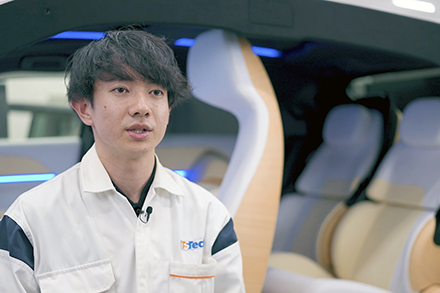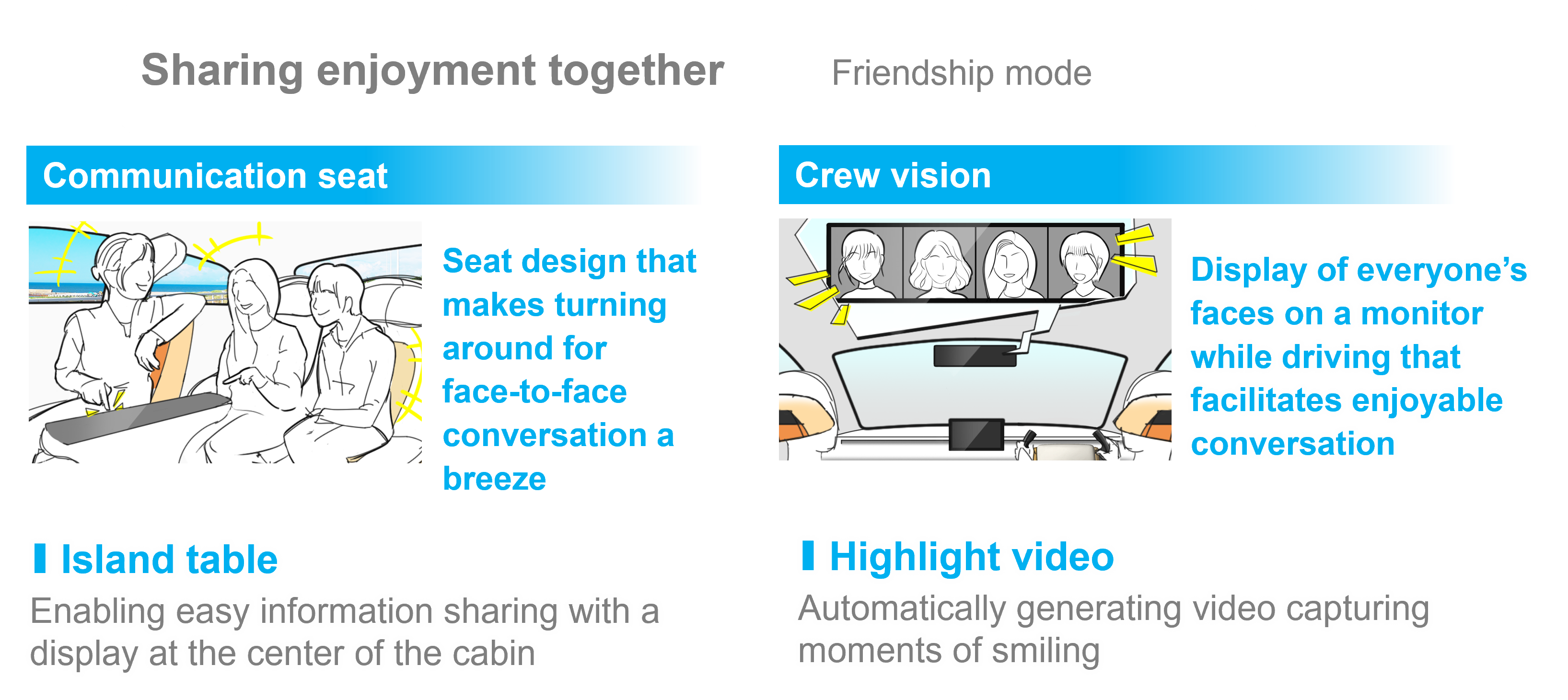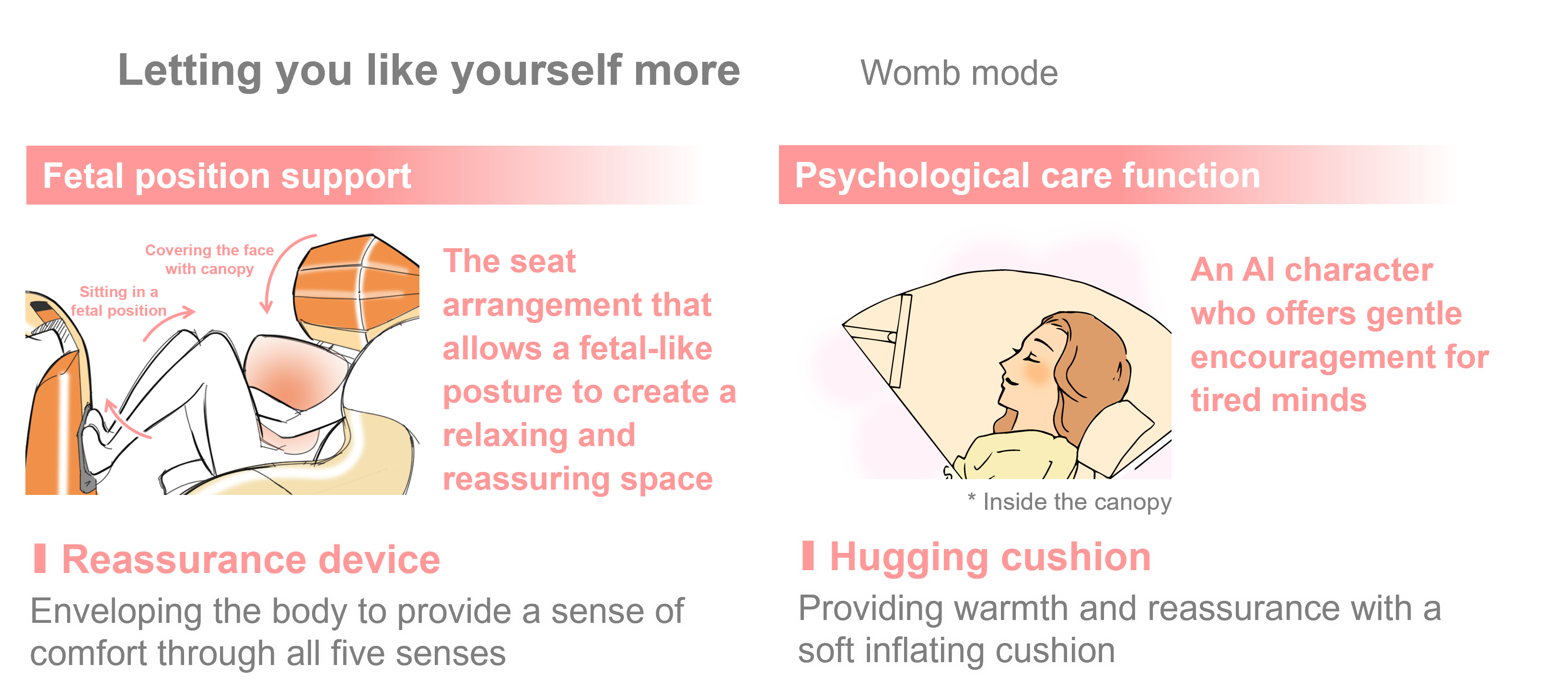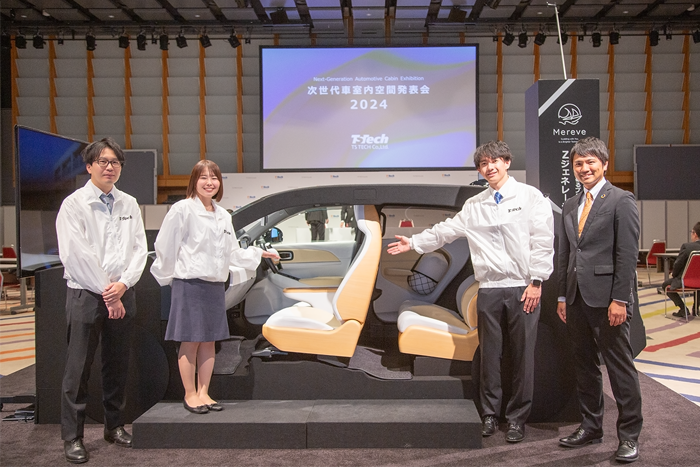Dec. 20, 2024
Employee
Emerging from a project intended to break the mold
Generation Z Cabin
Reasons behind the development of an automotive cabin with innovative features

At the Next-Generation Automotive Cabin Exhibition 2024,
TS TECH proposed new automotive cabins for next-generation vehicles and introduced the Generation Z Cabin,
which emphasizes joy and is designed to harmonize with the values of younger generations and allow them to be themselves.
We asked the leader of the team that developed this unique cabin, who joined TS TECH just three years ago,
about the background of this unique product, which inspires passengers even before they board the vehicle.
MaegawaAs the name implies, the Generation Z Cabin is an automotive cabin that reflects the values of Generation Z (the generation born from the late 1990s through around 2010). It’s characterized by a design unlike any previous vehicle interior—one that inspires passengers even before they board the vehicle. Our goal was to develop a comfortable and enjoyable cabin, rather than seeing a vehicle just as a means of mobility. Generation Z is a generation of social media natives who experienced COVID-19 in their student years. As such, they had fewer opportunities to spend time with friends and tend to find it harder to develop self confidence in comparison to others. Against this backdrop, we incorporated features to help resolve these concerns of Generation Z.
The two main features are the friendship mode and womb mode. By connecting a smartphone to the vehicle, a smartphone AI character, who harmonizes with the user through daily living, integrates with the vehicle to support each mode during travel times.
MaegawaFirst of all, the friendship mode feature focuses on enjoying drives with friends. It creates a space where it’s easy for all passengers to communicate face to face naturally by eliminating barriers between the front and rear seats to the degree possible and deploying a seat form that makes it easier for those sitting in front to turn around. A table-shape display is located at the center of the cabin for the enjoyment of all passengers together. As passengers discuss where to go based on destinations suggested by the AI character or select music to listen to together, they naturally come to feel closer to one another, adding their enjoyment of the travel. Also, even during manual driving, the faces of those in the rear seat can be seen in the rearview mirror, for conversation while seeing the faces of the passengers.
MaegawaOn the other hand, the womb mode feature focuses on personal time. In this mode, a passenger can arrange the seats to relax in a fetal position by taking a hugging cushion from the door and placing their feet on the footrest. The gently warming hugging cushion expands in a manner that is similar to respiration. The seat itself uses air cells to transform into an enveloping form. A canopy with a pleasing scent can be pulled down over the face, while the AI character offers gentle encouragement. This mode provides peace of mind through all five senses, like being held by one’s mother.
The idea is to value time spent with one’s inner self, in a relaxed, comfortable position.
Maegawahe inspiration was a sense inside the company that automotive cabin development for next-generation vehicles ultimately tended to be constrained by existing vehicle concepts. This prompted us to launch a project to develop a product that would break the mold of our own thinking. The Generation Z Cabin was developed to integrate multiple ideas into an automotive cabin that would appeal to Generation Z.
I think those of us in Generation Z have had limited opportunities for real-world communication and interaction with friends, since we experienced COVID-19 during our time as students. Since we wanted to deliver a space that would delight this generation, we began by trying to understand the values of Generation Z. This generation recognizes the importance of having two faces—a public face and a private, internal face. They see both as important and try to balance them. In the project’s initial stages, we discussed how to reflect these two faces in the automotive cabin. We saw a space for feeling empathy with each other like the friendship mode to be needed for keeping one’s well-adjusted public stance. We also saw a space to provide comfort and peace of mind like the womb mode to be essential for valuing one’s inner self. In fact, the younger generation wants spaces that can be changed to suit their feelings and state of being. We tried to realize these two modes to meet this need.
MaegawaI felt very insecure about being tasked with such an important responsibility in my third year with the company. I’m grateful for the support provided by my senior colleagues on the development team as I encountered unfamiliar challenges during the development process.
When we first came up with the idea, we weren’t sure such an innovative concept was feasible. We gave it concrete form while having not just development team members, but other Generation Z employees within the company try out the prototypes. While their feedback was fairly critical at times, they identified with the concept. So we made repeated improvements, keeping their opinions in mind.
At the Next-Generation Automotive Cabin Exhibition, we invited representatives from various automotive manufacturers to experience the developed product. Some had come up with similar ideas at their companies, but they were impressed by how we’d been able to give it a concrete form that they could experience. This taught me how important it is to express the value we want to offer to customers in concrete form.
We were left alone to proceed with the development process in our own way while reporting to company officers on our ideas and the progress of development. I attribute this to our culture, which encourages younger employees to take on challenges.








